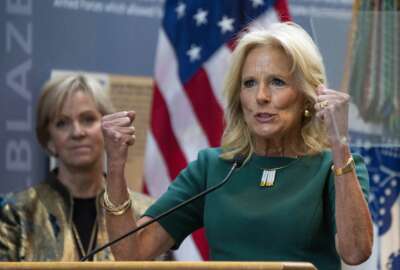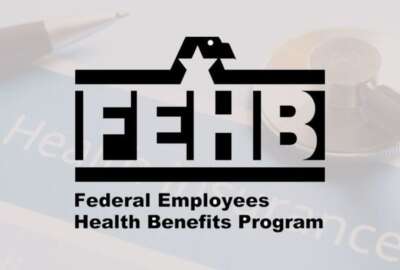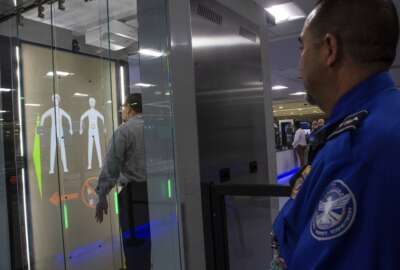The Coast Guard's Blended Learning Program
Last fall, we actually published what we're calling the Modernized Ready Learning Strategy. What does that mean? That really means is how are we looking at an individual going to be taught, learn, educated, develop, talent development, throughout the whole time that they are in the Coast Guard, from day one, when we recruit that individual? What are we going to be able to teach them? How we're going to continue to develop them until they decide to leave or depart the Coast Guard?
Dr. Gladys Brignoni
Deputy Commander, Force Readiness Command and Chief Learning Officer, U.S. Coast Guard
The Cloud's Role in Learning Technology
We're actually building out our software factory, and we're looking to move forward with agile development and DevSecOps as we go forward. So with that, that clearly goes into the cloud capabilities. We are working with the Air Force, using the Platform One capabilities that they have there. And we're looking at the variety of options for cloud services. What we've been able to do is leverage software as a service and we have developed several applications over the past year.
Brian Burns
Deputy Assistant Commandant for Command, Control, Communications, Computers and Information Technology (C4IT) (CG-6D) and Deputy Chief Information Officer, U.S. Coast Guard
IT Modernization and Online Learning During the Pandemic
ith the virtual private network (VPN), this allowed us to do a couple things. People are working remotely and cybersecurity, we still have to patch things well. We need to get people equipment that they can use. We wound up doing a couple things. First and foremost, we had to increase the gateways; we had to do a 10-fold increase on just the gateway capability capacity so we can handle the throughput that we were going to need. We got the circuits in and we did all that.
Brian Burns
Deputy Assistant Commandant for Command, Control, Communications, Computers and Information Technology (C4IT) (CG-6D) and Deputy Chief Information Officer, U.S. Coast Guard
Personalized Learning and Data Analytics
We're looking to see if individuals when they're coming to our service or already in the service who want to join one of our 19 technical fields ratings for enlisted members. If they already had some of their qualifications, those individuals now will be able to jump ahead, and from what used to be a long time in school to now what is 20% less. That individual can quickly get that that certification and go out back to the field.
Dr. Gladys Brignoni
Deputy Commander, Force Readiness Command and Chief Learning Officer, U.S. Coast Guard
About a year ago, the Coast Guard recognized change was coming in the way it trained its service members and civilians.
The fifth military service just didn’t know how fast change would come.
“Last fall, we actually published what we’re calling the Modernized Ready Learning Strategy. What does that mean? That really means is how are we looking at an individual going to be taught, learn, educated, develop, talent development, throughout the whole time that they are in the Coast Guard, from day one, when we recruit that individual? What are we going to be able to teach them? How we’re going to continue to develop them until they decide to leave or depart the Coast Guard?” said Dr. Gladys Brignoni, the Coast Guard’s chief learning officer and director of force readiness command, on Ask the CIO sponsored by Blackboard. “How are we infusing that? We’re really looking at blended learning, virtual training.”
Brignoni said blended learning includes everything from e-learning to virtually-facilitated coursed to self-directed courses to in-person classes.
She said while the Coast Guard had to suspend all in-person classes during the pandemic, the Coast Guardsmen and women and civilian adjusted quickly to the other approaches.
“I’m happy to report that that as bad as things are right now with COVID-19, it really has facilitated our development. We started with one course last year, and we have developed now over 50 courses on a blended learning platform. So that’s really exciting for us,” she said. “Let’s say we have a lot of technical training where we’re sending our workforce, sometimes for 20 weeks of training. So we’re looking at those 20 weeks and deciding first on those performance objectives. We had those terminal objectives, which objectives could be done now completely online? Could they be done now on by a facilitator online through a very interactive discussion, which really leads to good learning? It could be self-paced learning too. So it means many things, and there are ways to help our instructors develop the courses.”
Just like the pandemic forced the Coast Guard to accelerate its approach to training, the coronavirus also required changes to the technology infrastructure that supports the online education.
Brian Burns, deputy assistant commandant for command, control, communications and computers and IT (C4IT) and the deputy chief information officer for the Coast Guard, said the upgrades came in both the hardware students used—shifting to tablets from desktops—and the network that underlies the courses—adding WiFi to some classrooms and increasing the service’s virtual private network (VPN) capacity.
“With the virtual private network (VPN), this allowed us to do a couple things. People are working remotely and cybersecurity, we still have to patch things well. We need to get people equipment that they can use. We wound up doing a couple things. First and foremost, we had to increase the gateways; we had to do a 10-fold increase on just the gateway capability capacity so we can handle the throughput that we were going to need. We got the circuits in and we did all that,” he said. “We also had people that did have laptops, but usually left them on site so the patches would be implemented overnight. But now we told people to please take your laptop home and use it at home. The VPN gave us a capability to have better patch management, and it gave us the capability to get these computers in people’s hands as government furnished equipment, keeping the appropriate security around that and getting them to work from home.”
Burns added that the Coast Guard also began taking advantage of collaboration tools from its Microsoft Office 365 implementation to support the more than 40,000 users who now were working remotely.
“We had to expand the gateways, we had to buy thousands of workstations, we had to put into collaboration tools right away, we had a look at the security issues, we had to be able to turn on cameras and, and microphones, which were before completely locked down,” he said. “We also then opened up other applications, like telehealth services that we now are deploying. We’ve had a lot of other remote tools, even the electronic learning and remote learning that we’ve actually pushed forward to do. It also accelerated our software-as-a-service capability. So there’s a lot that came out of COVID-19 in a very short period of time to be tied right back to our modernization or technology revolution. But to do it in a much more rapid pace than we did before.”
The combination of new training and education approaches and better, maybe even, easier to use technology seems to be paying off.
Brignoni said the feedback her office has received from students has been mostly positive.
“We do have some people that say, ‘Well, we miss that close interaction that you have face-to-face.’ So we are looking at how do we make that close interaction happen even more?” she said. “One of the things that we know is blended learning, virtual training is really harder for instructors because you really need, to connect with students every four minutes versus every nine minutes when it’s at face-to-face. We are teaching people how to infuse that throughout that learning throughout that training.”
Burns said from a technology perspective, the blended learning environment means the Coast Guard also has to provide information anywhere, anytime, either in a full networked, a disconnected or an intermittent or limited environment. This means the Coast Guard must ensure the flexibility and security of these platforms and applications.
“We’re actually building out our software factory, and we’re looking to move forward with agile development and DevSecOps as we go forward. So with that, that clearly goes into the cloud capabilities. We are working with the Air Force, using the Platform One capabilities that they have there. And we’re looking at the variety of options for cloud services. What we’ve been able to do is leverage software-as-a-service, and we have developed several applications over the past year,” Burns said. “Some of them just highlight the auxiliary data system is enabling us to have the Coast Guard manage up to about 25,000 volunteer workforce, and provide capabilities by delivering this a software solution into the cloud. We’ve actually started with telehealth also. That’s allowing us to do remote capabilities for physicians to treat Coast Guard members and other software-as-a-service capability. We’re also developing a mentoring application so that we can tie mentors and mentees. And that goes along with not only just learning but coaching and learning capability. We’re beginning to build out a recruiting application that supports our goals of readiness of the workforce.”
The mentor/mentee application Burns talked about is another piece to the Modernized Ready Learning Strategy. The Coast Guard is combining traditional classroom or online learning with in-the-field training.
Brignoni said the service also is giving Coast Guardsmen and women and civilians credit for private sector experience and training.
“We’re looking to see if individuals when they’re coming to our service or already in the service who want to join one of our 19 technical field ratings for enlisted members. If they already had some of their qualifications, those individuals now will be able to jump ahead, and from what used to be a long time in school to now what is 20% less. That individual can quickly get that that certification and go out back to the field,” she said. “Another thing that we’re doing in our aviation field, is really looking at how do we individualize and personalize it? So one of the things that we’re doing is called the rating apprentice program. What that does is, let’s say you want to become an avionics electrical technician, that individual typically went to school for 26 weeks. So instead of now going to school for 26 weeks, we are letting that individual potentially partner with a mentor at an air station, and now they’re getting some on the job training in advance and they’re doing some online learning. By doing that, the individual now gets to skip 10 weeks of that training. Our goal is to make it more about mentoring and coaching and personalized to that individual.”
Copyright
© 2024 Federal News Network. All rights reserved. This website is not intended for users located within the European Economic Area.









